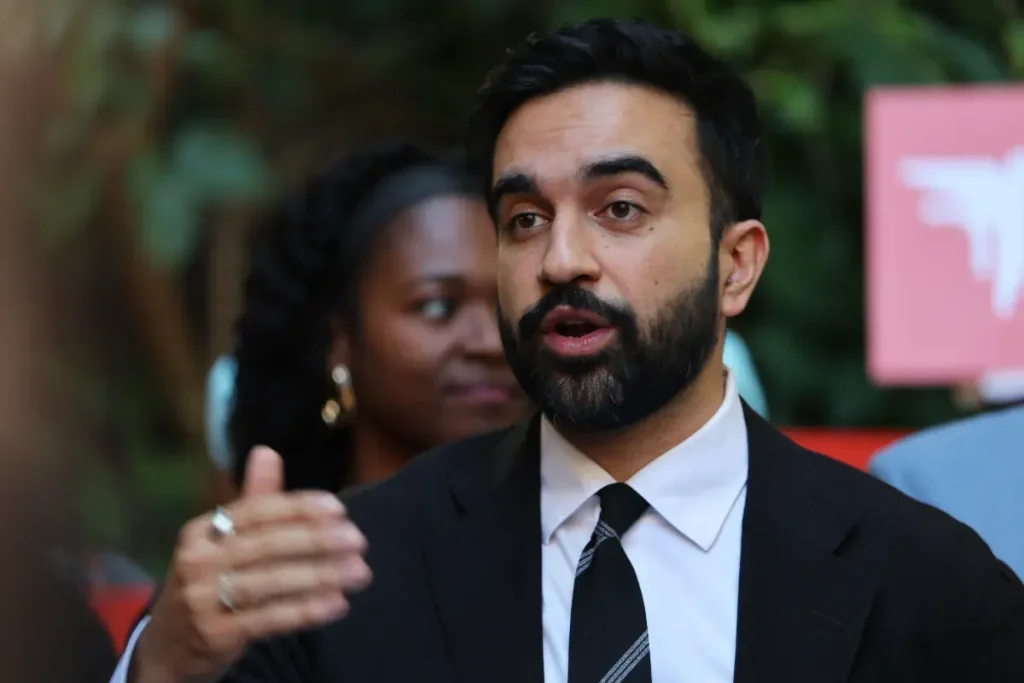Rising Star: Zohran Mamdani’s Historic Mayoral Bid Transforms New York Politics
In a stunning political development, Democratic candidate Zohran Mamdani has emerged as the overwhelming frontrunner in New York City’s 2025 mayoral race, commanding nearly 90 percent odds of victory according to recent prediction markets. This dramatic rise places him well ahead of his high-profile opponents – former Governor Andrew Cuomo and Republican Curtis Sliwa – and potentially positions him to make history as New York City’s first Muslim mayor. The race has captured national attention not just for its historic implications but for what it reveals about evolving political dynamics in America’s largest city during a period of significant polarization and change.
The electoral landscape shifted dramatically following incumbent Mayor Eric Adams’ withdrawal from the race, creating an opening that Mamdani has skillfully capitalized on. Recent polling from Suffolk University reinforces his dominant position, showing him with 45 percent support among likely voters – a commanding 20-point lead over Cuomo’s 25 percent. Prediction markets have been even more bullish on Mamdani’s chances, with Polymarket assessing his probability of victory at 89.6 percent as of Friday evening, compared to just 9.5 percent for Cuomo and less than 1 percent for Sliwa. This represents more than just a local political contest; it has become a national referendum on progressive politics in urban America, with prominent voices from across the political spectrum weighing in on the implications of a Mamdani victory.
The significance of this mayoral race extends far beyond New York’s five boroughs. If successful, Mamdani would not only break new ground for Muslim representation in American political leadership, but his victory would also signal a potential shift in how urban voters prioritize issues like affordability, public safety, and government responsiveness. His campaign has navigated a complex political environment where concerns about crime and economic insecurity have dominated public discourse, while simultaneously articulating a progressive vision that has energized younger voters and communities often marginalized in city politics. The election is increasingly viewed as a bellwether for how cities might respond to national political pressures, particularly in anticipation of potential changes in federal policy under a second Trump administration.
The race has drawn sharp commentary from political analysts and national figures alike, highlighting its broader implications. Columbia University professor Robert Y. Shapiro noted that if Sliwa were to drop out, his supporters would likely consolidate behind Cuomo in opposition to Mamdani, whom critics have characterized as too far left. “It is simple arithmetic. Mamdani’s lead over Cuomo would significantly tighten,” Shapiro told Newsweek. Meanwhile, the contest has even attracted attention from former President Donald Trump, who provocatively suggested on social media that “the best thing that could happen to the Republican Party” would be “a Communist Mayor in NYC,” attempting to frame Mamdani’s progressive platform as extreme. For his part, Mamdani has positioned himself as a defender of the city against potential federal hostility, stating he would “work every single day with our state and federal partners to protect New York City” from Trump’s “bullying.”
As the November 4th election approaches, questions remain about whether Mamdani’s opponents can mount an effective challenge to his commanding lead. The dynamics of the race could still shift if anti-Mamdani votes consolidate behind a single alternative candidate. Political observers are watching closely to see if Cuomo, with his extensive political experience and name recognition, can narrow the gap by appealing to moderate voters concerned about Mamdani’s progressive positions on issues like policing and economic policy. The contest has become a fascinating case study in how traditional political coalitions are being reconfigured in major American cities, with implications that could reverberate through national politics for years to come.
What makes this race particularly compelling is how it embodies broader tensions in American urban governance – between progressive visions of equity and inclusion versus more traditional approaches to public safety and economic development. Mamdani’s campaign has successfully tapped into desires for meaningful change while navigating legitimate concerns about crime and affordability that affect daily life for millions of New Yorkers. As the campaign enters its final phase, the outcome will not just determine who leads America’s largest city but may also signal whether a new generation of progressive leadership can effectively address the complex challenges facing urban America in an increasingly polarized national environment. For a city that has always viewed itself as exceptional, this election may indeed prove to be an exceptional moment in defining the future of urban governance.


